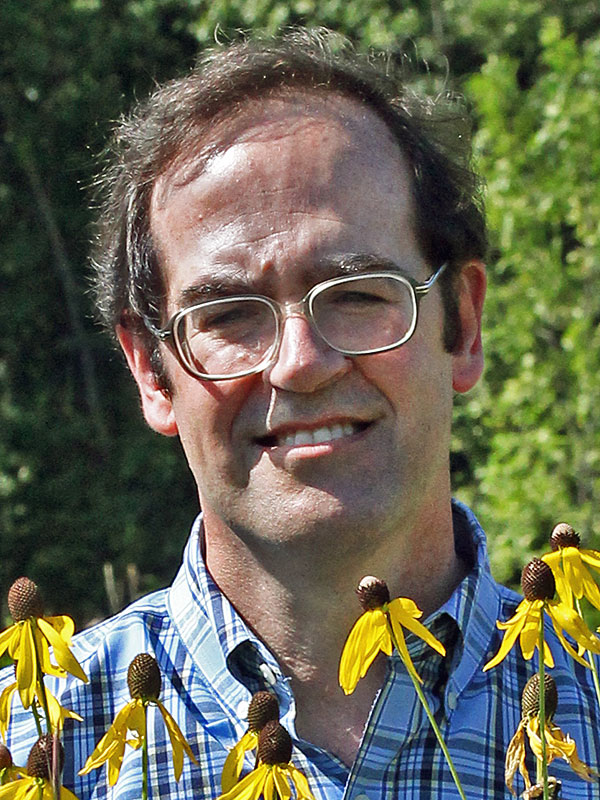Jeffrey Karron
Please visit my lab web page.
Education
- Postdoctoral Fellow, University of New Mexico, 1988-90
- PhD, University of Colorado, 1987
- BA, Princeton University, 1981
Research Interests
Research in my lab group focuses on evolutionary processes occurring in flowering plant populations. My students and I are particularly interested in understanding how plant mating systems evolve and how patterns of pollinator visitation influence male and female reproductive success. In collaboration with Dr. Randy Mitchell (Univ. of Akron) we have studied how ecological factors, such as population density and the presence of competitors for pollination, and genetic factors, such as floral morphology and floral display size, influence selfing rates and patterns of paternity in monkeyflower (Mimulus ringens). At our study site in Wisconsin this wetland perennial is pollinated by six sympatric species of bumble bees (Bombus). Through the use of genetic markers to unambiguously determine paternity, we have developed an unparalleled data set documenting fine-scale variation in mating patterns. For example, we have discovered that adjacent flowers open on the same day differ strikingly in selfing rates and number of outcross pollen donors. Nearly all fruits are multiply sired, averaging 4.92 outcross donors per fruit.
Students in my lab work on a variety of research systems, including Mimulus ringens, Lobelia siphilitica, and Asclepias verticillata. Current research questions include:
- What mechanisms are responsible for the high levels of multiple paternity observed in Mimulus ringens fruits?
- How does Mimulus floral display size influence male and female fitness?
- What effect do different bumble bee species have on patterns of pollen deposition and seed set in Mimulus ringens?
- How is the magnitude of inbreeding depression influenced by self and outcross competitors?
- How do competitors for pollination influence reproductive success and the mating system?
- How does population size of the milkweed Asclepias verticillata influence pollination success?
- Is there evidence for an Allee effect?
Selected Publications
Christopher DA, Karron JD, Semski WR, Smallwood PA, Trapnell DW, Mitchell RJ. 2021. Selfing rates vary with floral display, pollinator visitation and plant density in natural populations of Mimulus ringens. Journal of Evolutionary Biology 34: 803-815 doi.org/10.1111/jeb.13781
Karron JD, Christopher DA and Semski WR. 2021. Pollen transport: Illuminating a key mechanism of disassortative pollination. Current Biology 31: 893-895. doi.org/10.1016/j.cub.2021.05.050
Christopher DA, Mitchell RJ, Karron JD. 2020. Pollination intensity and paternity in flowering plants, Annals of Botany 125: 1–9. doi.org/10.1093/aob/mcz159
Christopher DA, Mitchell RJ, Trapnell DW, Smallwood PA, Semski WR and Karron JD. 2020. Edge effects and mating patterns in a bumblebee-pollinated plant. AoB Plants, 12(4) doi.org/10.1093/aobpla/plaa033
Christopher DA, Mitchell RJ, Trapnell DW, Smallwood PA, Semski WR, Karron JD. 2019. Hermaphroditism promotes mate diversity in flowering plants. American Journal of Botany 1131–1136. https://doi.org/10.1002/ajb2.1336
Minnaar C, Anderson B, de Jager ML, Karron JD. 2019. Plant-pollinator interactions along the pathway to paternity. Annals of Botany 123: 225-245 doi.org/10.1093/aob/mcy167Whitehead MR, Lanfear R, Mitchell RJ, Karron JD. 2018. Plant mating systems often vary widely among populations. Frontiers in Ecology and Evolution 6:38 doi.org/10.3389/fevo.2018.00038
